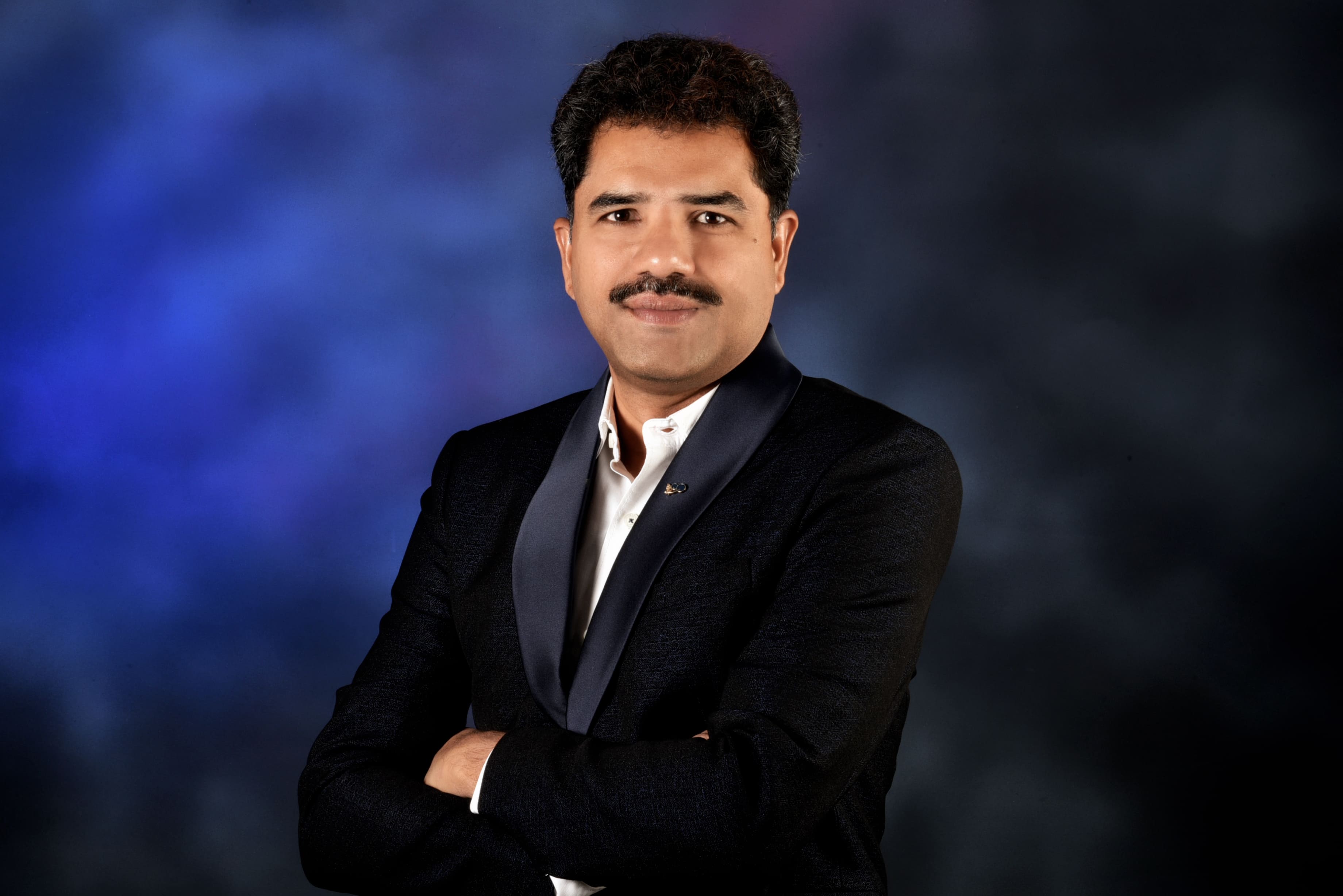If you've ever wondered "Will hiring an outside tech team save me money or drain my wallet?" you're not alone. IT outsourcing has grown into a giant business worth about $807.9 billion / ₹69.6 trillion in 2025, and it keeps getting bigger every year.
The first thing to know is that prices swing wildly by geography, a senior developer sitting in San Francisco might bill $100-$200 an hour (₹8,619-₹17,238), while the same work done from Bengaluru or Ho Chi Minh City can be as low as $15-$30 an hour (₹1,293-₹2,586).
Side-note: at the lower end, that hourly cost is less than what many of us pay for two movie tickets with popcorn in Delhi these days. What if you're a small company that just wants someone to "keep the lights on"?
Fully managed, all-inclusive support plans run $125-$255 per employee each month (₹10,774-₹21,978). That's roughly the price of a mid-range Android phone every quarter, only this investment keeps ransomware at bay instead of selfies on the cloud.
In the rest of this guide we'll break down why the numbers look the way they do, what's hiding behind the headline rates, and how to pick a model that actually matches your budget and risk tolerance. Grab a coffee or coconut water if you're reading this on the beach and let's dive in.
Cost of Outsourcing IT Services
Below are the different factors that contribute to the cost of outsourcing IT services:
1. Hourly developer rates - the quick snapshot
At the entry level, Indian juniors can start as low as USD 15 - 30 (₹1,293 - ₹2,586), whereas a junior in the U S can command USD 70 - 100 (₹6,033 - ₹8,619).
Move up to senior roles and the picture widens: Eastern-European seniors often bill USD 65 - 100 (₹5,602 - ₹8,619), while top-end US specialists reach USD 150 - 250 (₹12,929 - ₹21,548). A mid-level software engineer in the United States usually costs USD 100 - 150 an hour (₹8,619 - ₹12,929).
Western-European talent is far cheaper at USD 25 - 60 (₹2,155 - ₹5,171), while Eastern-European coders sit in the middle on USD 40 - 65 (₹3,448 - ₹5,602). In India, the same quality of mid-level skill typically runs USD 30 - 50 ( ₹2,586 - ₹4,309).
2. Monthly payroll cost - what one engineer really sets you back
Multiply those hourly figures by a standard 160-hour month and a mid-level hire costs roughly USD 19,200 ( ₹1.65 million) in the USA , USD 7,200 (₹620 k) in Western Europe, USD 8,000 (₹690 k) in Eastern Europe and USD 6,400 (₹552 k) in India.
The core maths uses the same hourly bands cited above, we're just scaling them by working hours. Those headline figures don't include benefits, office space, or paid leave. In-house staff in most markets end up costing 1.8 - 2x their gross salary once healthcare, pensions, recruiting and hardware are added.
So the true monthly outlay can climb to USD 38 k + ( ₹3.3 million) for every U S engineer versus ~ USD 12 k (~ ₹1 million) for an equivalent Indian professional.
3. Managed IT support - per-user price tags
For businesses that just want someone to "keep the lights on," USA managed-service providers quote USD 100 - 149 per user per month (₹8,619 - ₹12,843) for a standard bundle, rising to USD 150 - 400 (₹12,929 - ₹34,476) when 24 x 7 help-desk cover and advanced security are bolted on.
India-based help-desk firms advertise broad support between USD 50 - 150 (₹4,309 - ₹12,929) per user, which undercuts USA rates by roughly half.
European MSPs differ: published UK guides show £35 - 65, around USD 45 - 85 (₹3,888 - ₹7,326) per user, while Eastern-European providers sit in the USD 60 - 100 (₹5,171 - ₹8,619) band. A global Statista snapshot puts the average spend per employee at USD 146 (₹12,584), useful as a sanity-check when comparing quotes.
4. Project-based cost brackets - what a full build really costs
MVP budgets by region
- India: A starter MVP built with an Indian team usually lands between $8,000-$25,000 (₹689,520-₹2,154,750), thanks to lean teams and lower living costs
- Eastern Europe: A comparable scope in Belarus, Poland or Ukraine is $10,000-$30,000 (₹861,900-₹2,585,700), balancing solid engineering with mid-range rates.
- Western Europe: Agencies in Germany, France or the UK quote $30,000-$80,000 (₹2,585,700-₹6,895,200) for the same MVP, reflecting higher salaries and taxes.
- United States: U.S. shops start at $80,000-$250,000 (₹6,895,200-₹21,547,500), driven by senior talent and steeper overheads.
Mid-range SaaS builds (dashboards, payments, basic AI) push Western-European budgets to $80,000-$200,000 (₹6,895,200-₹17,238,000), while U.S. projects of the same size hover around the upper end of that band.
After launch, plan for 25-33% of the original build cost each year to cover bug-fixes, upgrades and small feature tweaks.
For example, a $1.2 M U.S. healthcare system, budgets $300,000-$400,000 (₹25,85,700-₹34,47,600) annually for upkeep. Skipping this line-item is the fastest way to turn a shiny app into shelf-ware.
5. Hidden & variable costs - the stuff that never shows on the quote
Vendor brochures rarely mention "soft" extras. Cultural and time-zone friction alone can tack 3%-27% onto the bill, and early productivity dips can swallow another 20% as teams learn each other's style.
Simply managing the contract adds 6%-10% more for internal PM time. On a ₹1 crore project, that's an extra ₹12 lakh-₹37 lakh before writing a single line of code. A single ransomware incident now costs $5.5-$6 million (₹474,045,000-₹517,140,000) on average, wiping out years of "savings" overnight.
Budgeting a modest hardening line-item (regular penetration tests, off-site backups) is far cheaper, and far calmer, than negotiating with crooks at 3 a.m. on a Sunday.
6. Contract models - why billing style changes the price you pay
Fixed-price vs Time-and-Materials (T&M)
Fixed-price works best when scope is crystal clear; T&M shines when specs evolve.
For a three-month e-commerce MVP:
- Fixed price quotes average $12,000 (₹1,03,4280) in India, $25,000 (₹2,154,750) in Eastern Europe, $40,000 (₹3,447,600) in Western Europe, and $60,000 (₹5,171,400) in the U.S., each figure nests comfortably inside the regional MVP ranges above.
- T&M budgets drift with every new idea, so clients cap hours or add "not-to-exceed" clauses to stay sane.
Dedicated-team retainers
When you need ongoing work, you simply rent a squad: monthly cost = hourly rate x 160 hours.
Using 2025 averages, India $20-$50/hr (₹1,724-₹4,309), Eastern Europe $40-$65/hr (₹3,447-₹5,602), Western Europe $80-$150/hr (₹6,895-₹12,929), U.S. $100-$150/hr (₹8,619-₹12,929).
A mid-level two-person team comes to:
- India: $4,800-$8,000 (₹413,712-₹689,520)
- Eastern Europe: $6,400-$10,400 (₹551,616-₹896,376)
- Western Europe: $12,800-$24,000 (₹1,103,232-₹2,068,560)
- U.S.: $16,000-$24,000 (₹1,379,040-₹2,068,560)
A quick rule of thumb: multiply the hourly gap you saw earlier by 160 and you'll rarely be off by more than 10%. Tiny calculation, big clarity.
5. Step 5: How AiDOOS helps optimize the cost of outsourcing IT services
AiDOOS runs on an outcome-based pricing model. That means you don't pay for every hour the team logs; you pay a fixed amount for each agreed deliverable or milestone.
For example, instead of wondering if a sprint will cost $50,000 (~ ₹4,309,500) or more, you know up front you'll pay exactly what's on the milestone sheet when it's done.
By leveraging its large global network, AiDOOS finds the right mix of talent from regions like India, Eastern Europe, or Latin America, all managed under one roof. That means you get mid-level developers at $30-50/hr (₹2,586-₹4,309/hr) and senior experts at $60-100/hr (₹5,171-₹8,619/hr), without the usual vendor markup or hidden fees.
This setup removes the risk of surprise overages and keeps both sides laser-focused on shipping working software. On top of that, AiDOOS's AI-powered dashboard tracks progress in real time and predicts budget overruns before they happen.
You can reallocate resources on the fly, say shifting a feature-complete sprint from a $150/hr specialist in the U.S. to a $40/hr engineer in Poland, saving up to 60% on labour costs. Side-note: it's almost like having your own lean in-house team, only without the office coffee machine!
Schedule A Meeting To Setup VDC![]()
Conclusion
Outsourcing IT services can save you money and give you access to global talent. By knowing regional rates, project brackets, and hidden fees, you can plan your budget with confidence and avoid surprises.
First, compare hourly or project prices across regions, India (₹1,293-₹4,309 /hr or USD 15-50), Eastern Europe (₹3,448-₹5,602 /hr or USD 40-65), Western Europe (₹6,895-₹12,929 /hr or USD 80-150), and the U.S. (₹8,619-₹17,238 /hr or USD 100-200).
Then add about 20-30% for maintenance and soft costs like management time, travel, or culture training. Finally, pick a pricing model, hourly, fixed, or the best outcome-based, that fits your project's clarity and risk level.
Frequently Asked Questions
1. What is the cost of outsourcing IT services for enterprises?
IT services outsourcing for enterprises actual cost depends on different factors like region and skill level: mid-level developers cost about USD 30-50/hr (₹2,586-₹4,309) in India, USD 40-65/hr (₹3,448-₹5,602) in Eastern Europe, USD 80-150/hr (₹6,895-₹12,929) in Western Europe, and USD 100-200/hr (₹8,619-₹17,238) in the U.S.
2. What factors determine the cost of IT outsourcing?
Main factors contributing to the total cost of IT outsourcing are location, project size, team seniority, chosen pricing model (hourly vs. fixed), and any extra needs such as 24x7 support or strict security requirements.
3. Are there hidden costs in outsourcing IT services?
Yes. You should budget an extra 15-30% on top of headline rates for contract management, meetings, travel, onboarding dips, and security hardening.
4. Which pricing model is more cost-effective for IT outsourcing?
Below is the comparison of the pricing model for IT outsourcing:
- Hourly/T&M is best if your project scope may change; it gives you flexibility but can be less predictable.
- Fixed-price works well for small, well-defined projects, since you know the total cost upfront.
5. Does outsourcing to overseas IT firms really save money?
Yes, by hiring in lower-cost regions, companies can cut direct labour spend by up to 60% compared to in-house teams, even after adding travel or coordination fees.
6. Which IT services are best suited for outsourcing?
IT services that are best suited for outsourcing are routine and well-scoped tasks like app maintenance, help-desk support, QA testing, and defined development sprints are ideal.
7. How does AiDOOS lower the cost of IT services and projects?
AiDOOS uses outcome-based pricing so you pay per milestone instead of per hour.
Its AI-driven platform matches the right mix of global talent, tracks budgets in real time, and bundles all fees, so you avoid hidden charges and can shift work between regions for up to 60% in savings.

